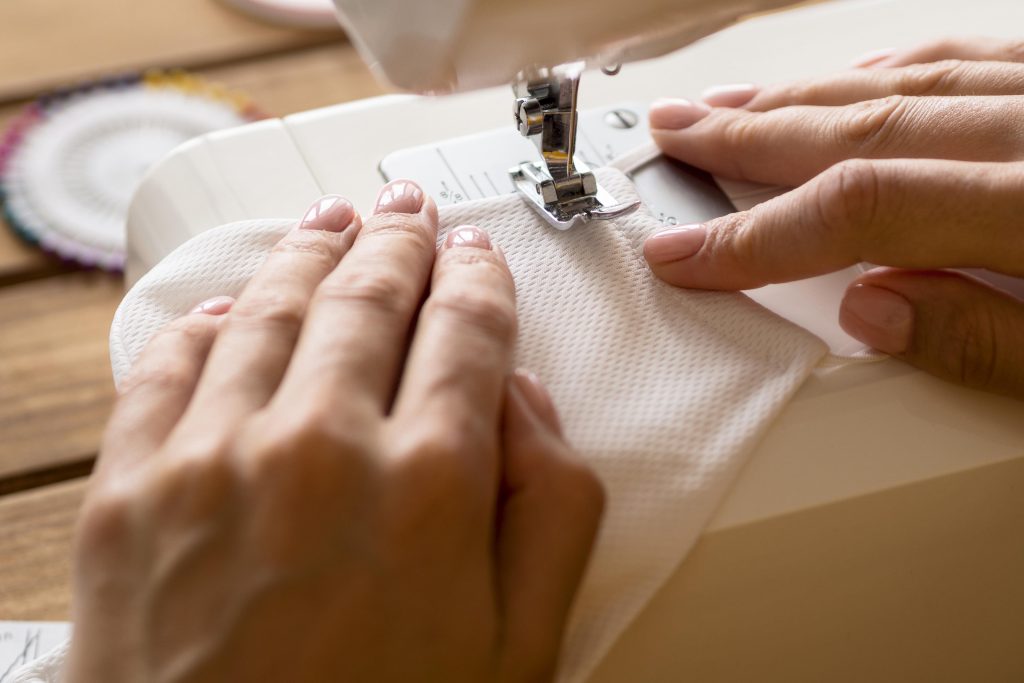Summary:
- The textile industry’s supply chain is a multifaceted production system comprising several stages
- This sector is vital to the fashion industry, involving a range of interlinked activities
- Discover how to manage your production efficiently with the Audaces360 multi-solution! Get the free trial now.
The textile industry’s supply chain consists of a series of interconnected stages that play a crucial role in the broader fashion industry.
Managing production costs, meeting delivery deadlines, navigating trade barriers during import and export, and ensuring the quality of incoming materials are among the challenges this industry faces.
However, the textile supply chain also offers opportunities for clothing manufacturers to expand their operations and enhance product quality.
By comprehending both the challenges and opportunities inherent to the textile supply chain, it becomes possible to adopt efficient strategies, invest in technology and innovation, explore new markets, and satisfy consumer demands.
Sumário
If you’re interested in understanding how these factors can impact your company, keep reading!
What is the textile industry’s supply chain?
The textile industry’s supply chain constitutes a complex production system that encompasses all the necessary steps for the transformation of raw materials into finished textile products, including clothing, fabrics, threads, and fibers.
This sector plays a pivotal role in the broader fashion industry, comprising a series of interrelated activities.
The textile supply chain typically consists of five primary segments:
Fibers and raw materials
At this initial stage, the production of fibers and raw materials required for textile product manufacturing takes place.
These fibers can either be natural, such as cotton, silk, and wool, or synthetic, including polyester, nylon, and elastane.
They can be sourced from cultivation, extraction, or laboratory synthesis.

Spinning
During this phase, fibers undergo a spinning process to transform them into yarn.
This process involves stretching and twisting the fibers to create the threads used in subsequent weaving or knitting.
Different spinning methods, such as ring, rotor, and open-end, are employed.
Weaving or knitting
This stage focuses on the production of fabrics or knitwear using the yarn created in the spinning process.
In weaving, yarns are interlaced at right angles to form flat fabrics, while knitting involves the interweaving of yarns into a mesh structure.
These processes can be executed using automated looms or knitting machines.
Finishing

Following the weaving or knitting process, fabrics undergo finishing procedures, including washing, dyeing, printing, and the application of chemicals, among other treatments.
The goal of finishing is to impart desired properties to the fabrics, such as softness, durability, and color.
Production and distribution
In the final stage, finished fabrics are transformed into textile products, such as clothing, through the manufacturing process.
This involves cutting, sewing, assembling, and finishing the pieces. Subsequently, the products are distributed to retailers, who make them available to consumers.
Learn more: Discover how to enhance productivity in the textile business chain
What are the main challenges in the textile Industry’s supply chain?
In the textile industry’s supply chain, clothing manufacturers encounter numerous challenges that require adept management to ensure efficiency, competitiveness, and success in the market.
Here, we delve into these challenges and explore how they impact the industry.
Production
Apparel manufacturers grapple with the task of effectively managing production costs, encompassing raw materials, labor, energy, and various inputs.
Additionally, the textile sector experiences rapid, seasonally driven shifts in market demands.
To keep pace with these trends and meet strict delivery deadlines, efficient supply chain management is essential.
Learn more: How to define production stages using a textile flowchart
Export
Exporting products from the textile industry poses its own set of hurdles for clothing manufacturers.
These challenges often manifest in the form of trade barriers, including import tariffs, quotas, and stringent technical and sanitary regulations.
Such barriers increase export costs and create obstacles in accessing specific markets.
Companies within the textile sector must compete with foreign businesses that may hold advantages in terms of labor costs, production scale, or favorable trade agreements.
Learn more: Find out the finest apparel manufacturing softwares for your company
Import

Relying on the import of raw materials and finished products is commonplace for clothing manufacturers. Import-associated expenses, such as tariffs, import taxes, and logistics costs, can significantly impact a company’s profitability.
Moreover, fluctuations in exchange rates can influence cash flow dynamics.
Establishing robust quality controls is imperative to avert issues like subpar or non-conforming products, which can tarnish a company’s reputation and result in financial losses.
Learn more: What is takt time and how to calculate it in your company?
Exploring opportunities within the textile industry’s supply chain
The textile industry’s supply chain presents a range of opportunities that clothing companies can leverage to their advantage.
Here are some illustrative examples:
Sustainability
The growing awareness of environmental and social issues has created a burgeoning demand for sustainable textile products.
Clothing manufacturers have the opportunity to adopt eco-conscious production practices, including the use of organic or recycled raw materials, environmentally friendly dyeing processes, and waste reduction initiatives.
By investing in sustainability, companies can attract environmentally conscious consumers and set themselves apart from competitors.
Learn more: How to master sustainable creation and production in the eco fashion era
Technological innovation
Technology is revolutionizing the textile industry, ushering in new opportunities.
Automation in production processes can enhance efficiency and reduce costs significantly.
Moreover, technologies like 3D printing, smart fabrics, and augmented reality present avenues for developing innovative products.
Learn more: What is phygital fashion and how to integrate the physical and digital in apparel
E-commerce and online sales

Clothing manufacturers can expand their online presence to tap into the global reach offered by e-commerce.
By investing in efficient e-commerce platforms and implementing digital marketing strategies, companies can access new markets, increase sales, and strengthen customer relationships.
Learn more: Boost your e-commerce store with a clothing virtual fitting room
Personalization and customer experience
As consumers seek personalized products, clothing manufacturers can seize this opportunity by offering customization options.
This includes enabling customers to choose prints, colors, sizes, and styles based on their preferences.
Creating a delightful and distinctive shopping experience, whether in physical stores or online, adds value and bolsters customer loyalty.
Emerging markets
Economic growth in emerging countries such as China, India, Brazil, and others has resulted in increased demand for textile products.
These markets present opportunities for expansion and boosted sales for clothing manufacturers.
By understanding the nuances of each market and tailoring their business strategies accordingly, companies can explore new avenues for growth.
Enhance your textile supply chain efficiency with Audaces360!
Audaces360 is a comprehensive solution that harnesses advanced technologies to streamline the fashion production chain.
With a host of features including computerized sketching and pattern creation, precise fabric cutting and fitting, production management, and seamless integration with intelligent equipment, Audaces360 is designed to minimize waste and facilitate agile production.
In addition to its robust set of tools, Audaces also provides valuable technical support and specialized training to help companies fully leverage the benefits of this technology.
As a result, businesses can rely on Audaces360 as a versatile solution that addresses every facet of the fashion production chain.
Download our free e-book now and get some insights for a successful future in the textile industry:
FAQ
The textile supply chain is a complex production system encompassing all the steps to convert raw materials into finished textile products like clothing, fabrics, threads, and fibers.
The primary challenges in the textile supply chain include production, export, and import.
Opportunities include sustainability, technological innovation, e-commerce and online sales, personalization and customer experience, and emerging markets










